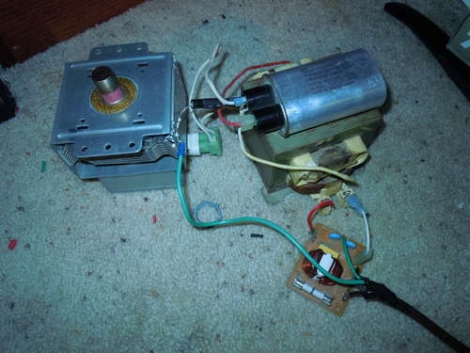Instructables user [Jimmy Neutron] had an old microwave sitting around and figured he might as well gut it to build a high-energy radio frequency (HERF) gun.
The concept of a HERF gun is not incredibly complex. Much like your microwave at home functions, a high voltage power source is used to drive a magnetron, which produces micro wave radiation at 2.45GHz. These waves are then guided away from the magnetron using a waveguide, towards whatever the target might be. These waves then energize the target in a similar fashion as the water molecules in your food are energized during cooking.
[Jimmy] has not quite finished his HERF gun as he still needs to build a waveguide for it and then safely mount it for use. In the meantime, check out the pair of HERF guns we found in the videos below.
As a parting note, we must stress that building a similar device is dangerous, very dangerous – especially if you do not know what you are doing. Microwaves contain high voltage components, and exposure to microwave radiation can be deadly under certain circumstances. Stay safe!














